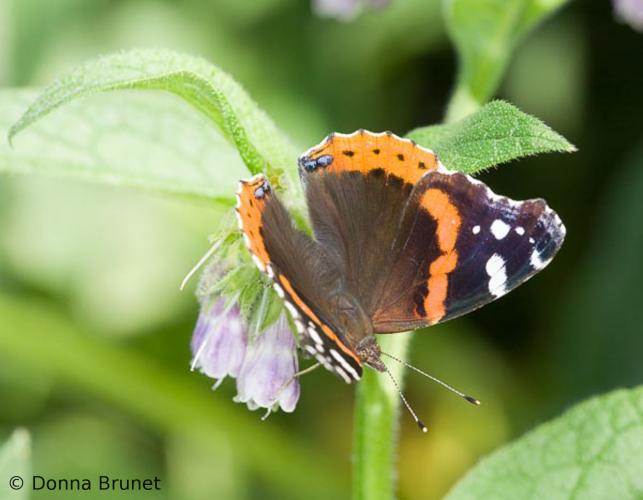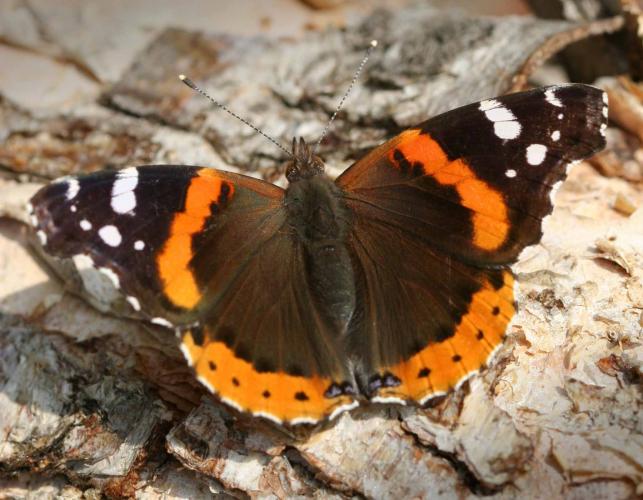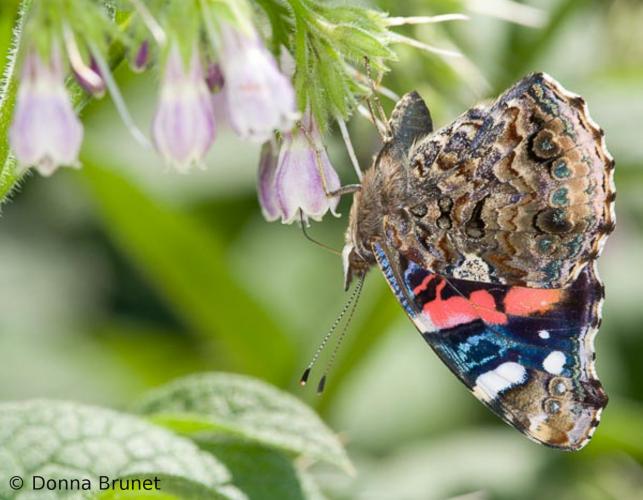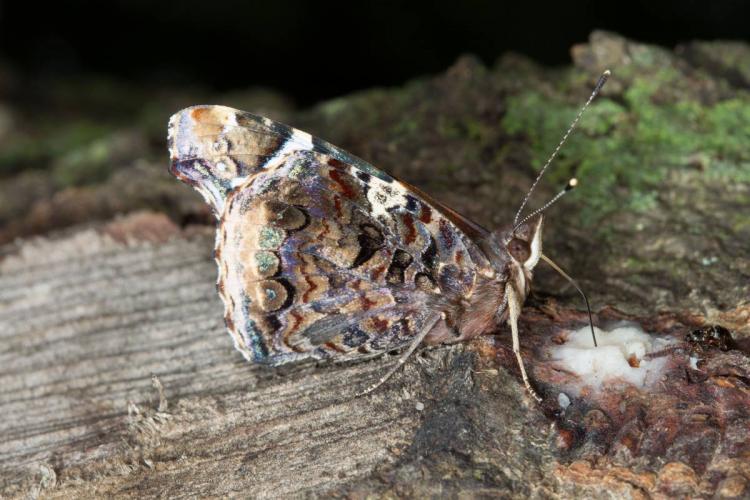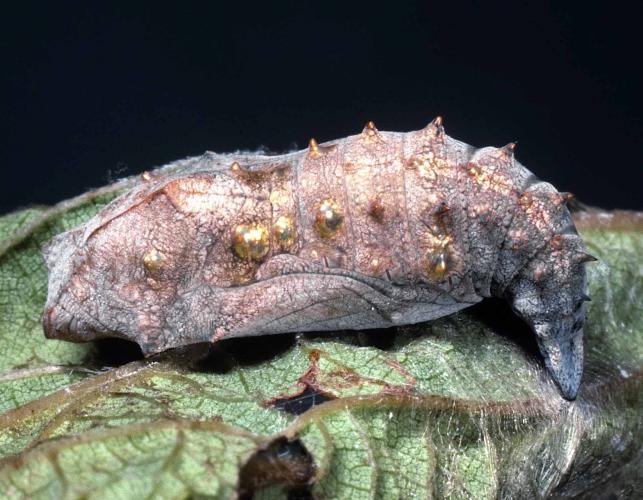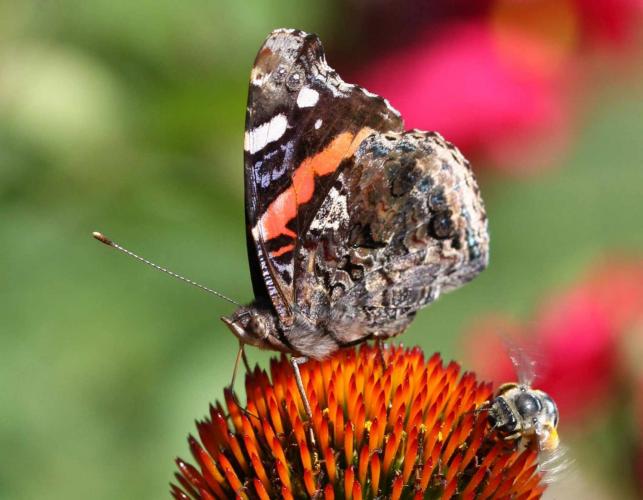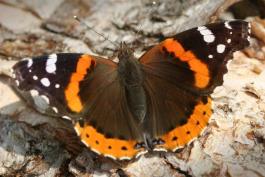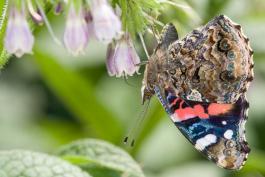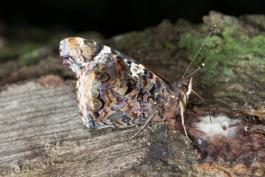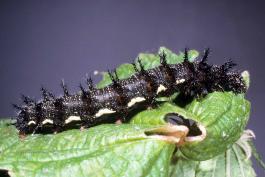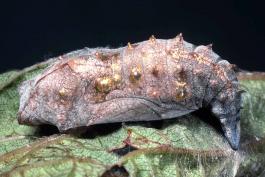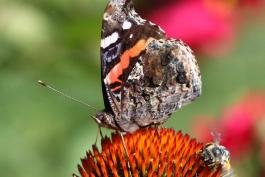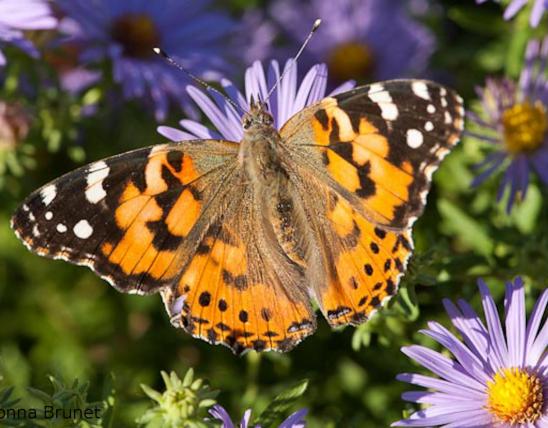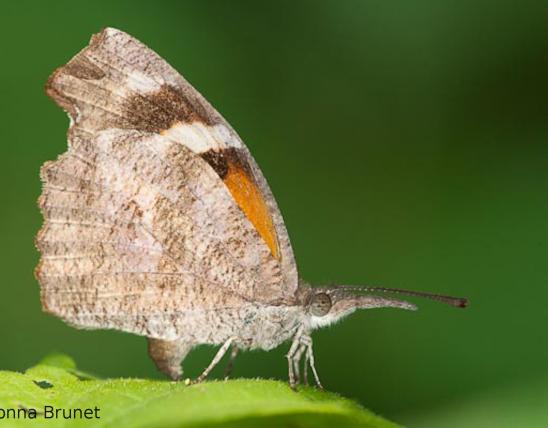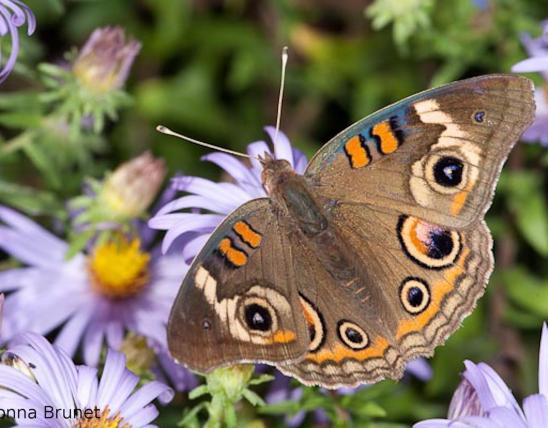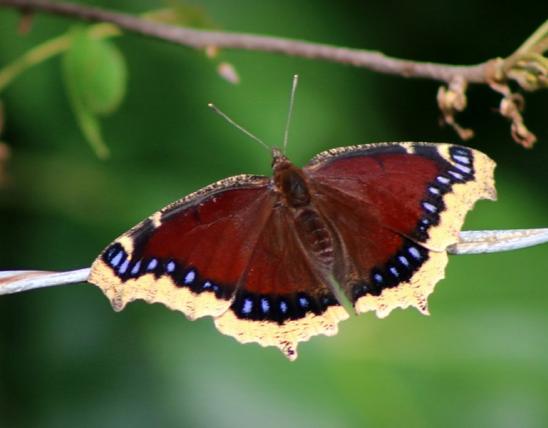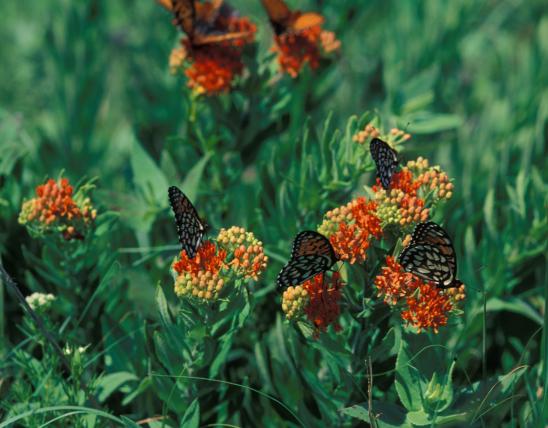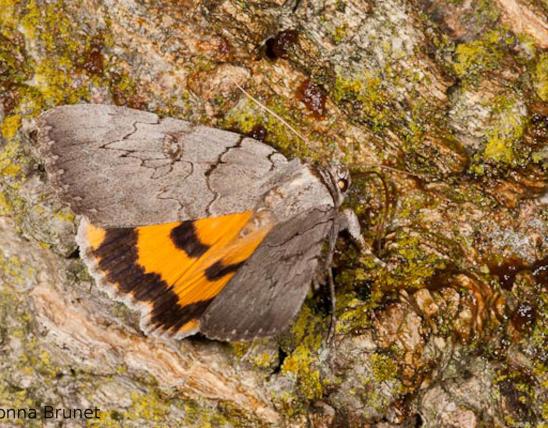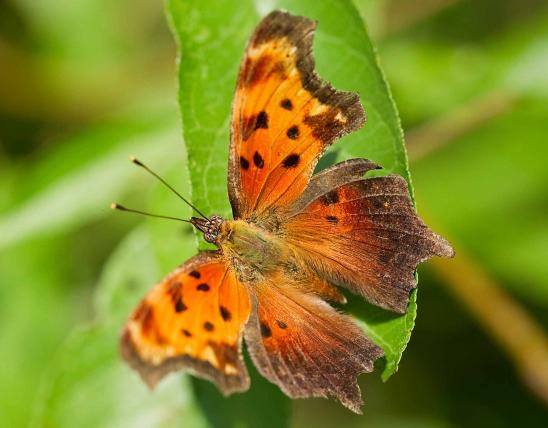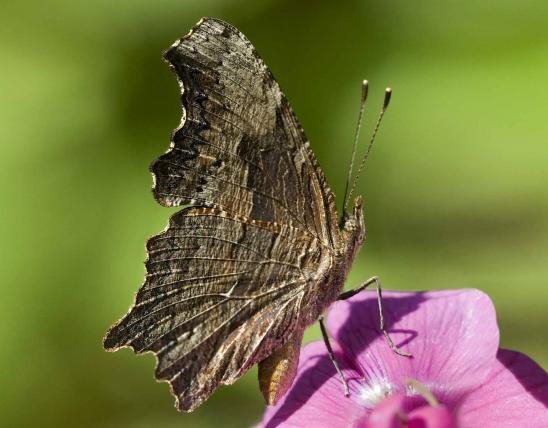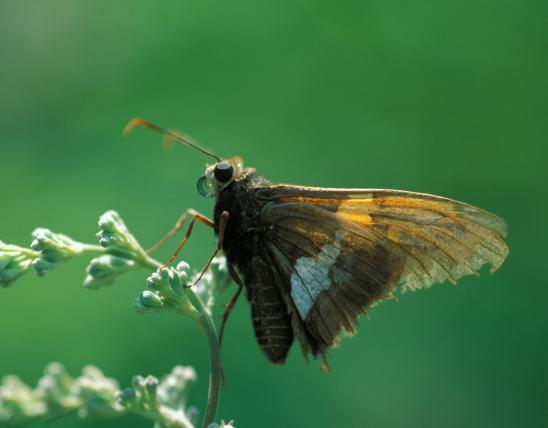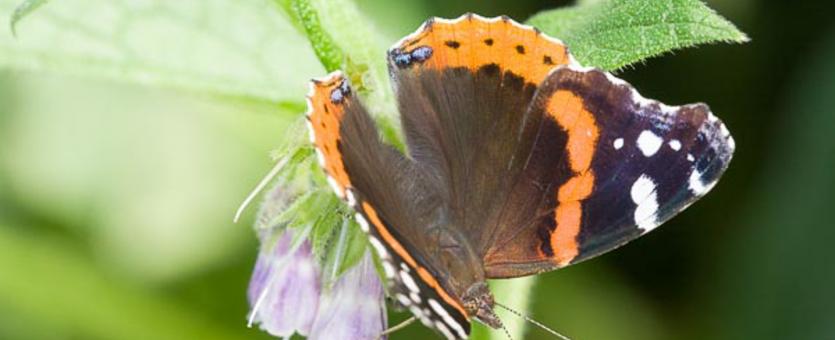
Red admirals dart through Missouri woods, gardens, and open areas from March through November. They are easily recognized by their black, red, and white pattern.
Adults: Upper side is black with an orangish-red median forewing band and a red band on the trailing edges of the hindwing. There are white spots on the forewing tips. Seen from below, the hindwing has a dark mottled pattern, and the forewing is marked with red, white, and blue.
Larvae: The caterpillars look different with each larval molt. The color varies and can be black, greenish, whitish, or brown, with many small warts and dark spines.
Length: 1½–2¼ inches; larvae to about 2 inches.
Statewide. Found all around the Northern Hemisphere (that is, they are Holarctic), including Eurasia and northern Africa and New Zealand. In North America, this species is found from Guatemala and Mexico through the United States and into northern Canada. The North American range is similar to that of the closely related American lady.
Habitat and Conservation
Common in woods, edges of woods, and grassy, open areas including gardens. They fly quickly and erratically. Look for them in Missouri from March into November. During late afternoon until almost dark, males perch on trees and shrubs, darting out at other butterflies and passing animals while they watch for females. Because red admirals roam widely when feeding, a male rarely uses the same territory for more than one day. The best perching sites and surrounding territory tend to be selected by different males each day.
Food
Caterpillars eat plants in the nettle family, including wood nettle (Laportea) and stinging nettle (Urtica). Using silk, they construct folded leaf shelters in their food plants, giving them added protection from predators while they munch on the leaf. Adult red admirals drink tree sap, juices from decaying fruit, and moisture from animal droppings. Less often, they visit flowers, including milkweeds, clovers, and asters. They are also found at mud puddles and in damp places along creek beds and lake shores.
Status
A common Missouri butterfly. In the same genus as American lady and painted lady butterflies. Like them, this species is migratory, moving north from warmer regions to recolonize much of the United States and Canada. Researchers are studying red admiral migration: Does a single individual butterfly move all the way from the overwintering territory to the north-most part of the range? Or does it take generations to fly that distance in the course of a season? And just how far north are they usually able to survive winter hibernation? Apparently, at least some of them migrate south for the winter.
Life Cycle
The red admiral migration and life cycle is similar to that of the American lady butterfly. They arrive from the south in March and continue to fly into November. There are 2 or 3 broods. Females lay eggs singly on the leaves of host plants. Larvae roll over leaves of the food plant, using silk to bind the edges together, constructing a little shelter for themselves. Hibernation occurs in the adult or pupal stage, though they do not survive very cold temperatures. In that case, regions with cold winters are recolonized by new butterflies arriving north in spring.
Human Connections
The species name, “atalanta,” comes from a character in Greek mythology; the orphaned Atalanta was raised in the woods by a bear and grew up to be an awesome and independent huntress.
The red admiral butterfly is also referenced in one of the 20th century’s most acclaimed novels, “Pale Fire” by Vladimir Nabokov. Nabokov was an accomplished butterfly biologist.
Ecosystem Connections
In fits of itchy discomfort, many of us have wondered “Why are there chiggers?” and “Why are there stinging nettles?” The latter question is answered in part by this beautiful butterfly, which requires nettle plants in order to live. This is a wonderful reminder that nature is interconnected, and it doesn’t revolve around us.
